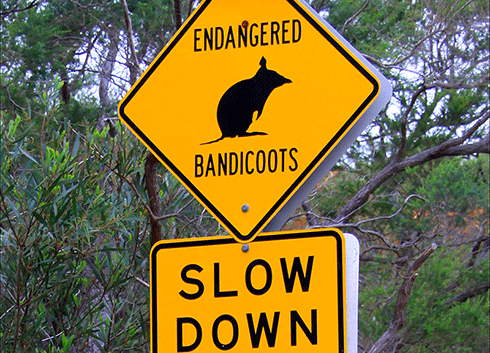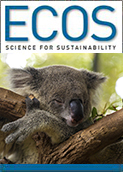
|
Published: 9 July 2014
Protected areas failing vulnerable species
Future national park expansion should focus on land that is home to threatened species, rather than on land that is cheap to protect, researchers say.

|
|
The University of Queensland study found that 17% of the 4,118 threatened vertebrates around the world are not found in a single protected area and that 85% are not adequately covered by both current and proposed protected areas. Credit:
Rupert Ganzer CC BY-ND 2.0
|
The University of Queensland’s Dr Oscar Venter, who led the study, found that 85 per cent of the world’s vulnerable species are not sufficiently covered by protected areas.
‘A number of countries are working toward what could become the biggest expansion of protected areas in history,’ said Dr Venter.
‘It is vital that this expansion focusses on land which contains threatened flora and fauna, rather than the ‘business-as-usual’ approach of favouring land that is cheap to protect,’ said
The study by researchers from several organisations and published today, recommends that national park expansion should focus on safeguarding the world’s 4118 mammal, bird, and amphibian species that are vulnerable to extinction in the near term.
‘Our study shows that existing protected areas are not doing their job effectively, leaving many species in a perilous position,’ Dr Venter said.
In 2010, 193 national signatories of the Convention on Biological Diversity committed to increase the world’s terrestrial protected area network from 13 to 17 per cent of the globe by the year 2020.
Using computer models to simulate scenarios for future protected expansion, the study’s authors discovered that these proposed new parks could miss most of the world’s unprotected biodiversity.
Associate Professor James Watson, study co-author from UQ and the Wildlife Conservation Society, said the key to safeguarding the world’s most at-risk fauna and flora was to link threatened species coverage to protected area expansion, which would combine two of the commitments made by the parties to the Convention on Biological Diversity, known collectively as the Aichi Targets.
‘By protecting wild areas and threatened species, we can greatly increase the chances of maintaining Earth’s biological diversity for future generations,’ Dr Watson said.
‘When these goals are combined, countries are much more likely to create new parks in biologically threatened areas, which will lead to long-term dividends for global conservation.’
The research was conducted in collaboration with the Wildlife Conservation Society, James Cook University, CSIRO Ecosystem Science, the International Union for Conservation of Nature, BirdLife International, Sapienza Universitá di Roma, Stanford University, and the University of Kent, and published in PLOS Biology on 25 June 2014.
Source: University of Queensland



